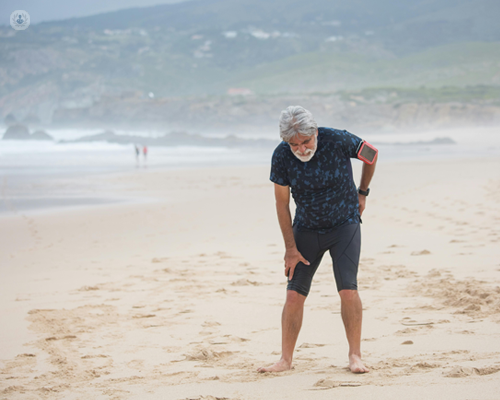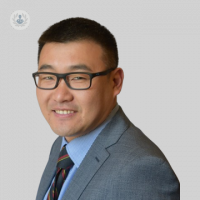What are the causes of sciatica, and can they be treated surgically?
Written in association with:Sciatica can be caused by various conditions affecting the spine, including herniated discs, spinal stenosis, degenerative disc disease and piriformis syndrome.
Surgical treatment options for sciatica include microdiscectomy, laminectomy and spinal fusion, depending on the underlying cause and severity of the symptoms. Leading orthopaedic spinal surgeon Mr Wai Yoon goes into further detail, in this informative article.

What is sciatica?
Sciatica is defined as pain which radiates along the path of the sciatic nerve, that branches from your lower back through your hips and buttocks and down each leg. Typically, it affects only one side of your body and can range from a mild ache to sharp, debilitating pain.
What causes sciatica?
Lumbar herniated disc
A lumbar herniated disc is the most common cause of sciatica. When the soft inner core of a disc in your spine leaks out through the outer layer and presses on the nearby nerve roots, it can cause inflammation, irritation and pain along the sciatic nerve.
Spinal stenosis
Spinal stenosis is a condition characterised by the narrowing of the spinal canal, which can compress the nerve roots that make up the sciatic nerve. This compression can lead to symptoms of sciatica, including pain, numbness and weakness in the legs.
Degenerative disc disease
Degenerative disc disease occurs when the discs between the vertebrae of the spine break down due to age-related wear and tear. As the discs lose their cushioning ability, they can bulge or herniate, putting pressure on the nearby nerves and causing sciatic pain.
Piriformis syndrome
The piriformis muscle, located in the buttocks, can sometimes irritate or compress the sciatic nerve, leading to symptoms similar to those of sciatica. This condition is known as piriformis syndrome and can result from muscle spasms, injury or anatomical variations.
How is sciatica treated surgically?
Microdiscectomy
A microdiscectomy is a minimally invasive surgical procedure performed to relieve pressure on the compressed nerve root caused by a herniated disc. During the procedure, the surgeon removes the portion of the herniated disc that is pressing on the nerve, providing relief from sciatic pain.
Laminectomy
A laminectomy, also known as decompression surgery, involves removing the lamina (the bony arch of the vertebra) to widen the spinal canal and alleviate pressure on the nerves. This procedure may be performed to treat spinal stenosis that’s causing sciatica symptoms.
Spinal fusion
In cases where there is instability in the spine due to degenerative disc disease or other conditions, spinal fusion surgery may be recommended. This procedure involves joining two or more vertebrae together with bone grafts or implants to stabilise the spine and reduce pain.
Do you struggle with sciatica, and want look at getting a definitive diagnosis of its possible cause? Arrange a consultation with Mr Yoon via his Top Doctors profile.


